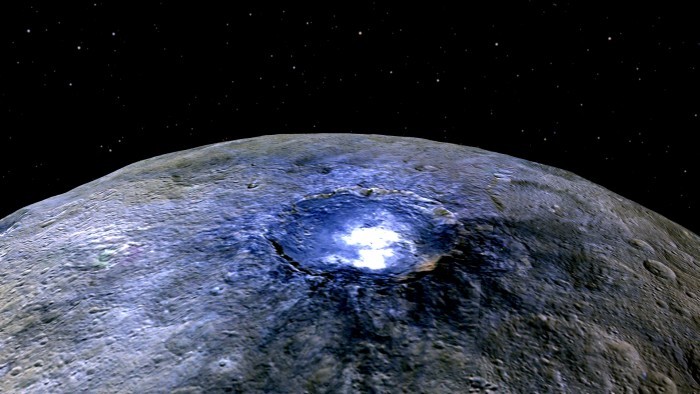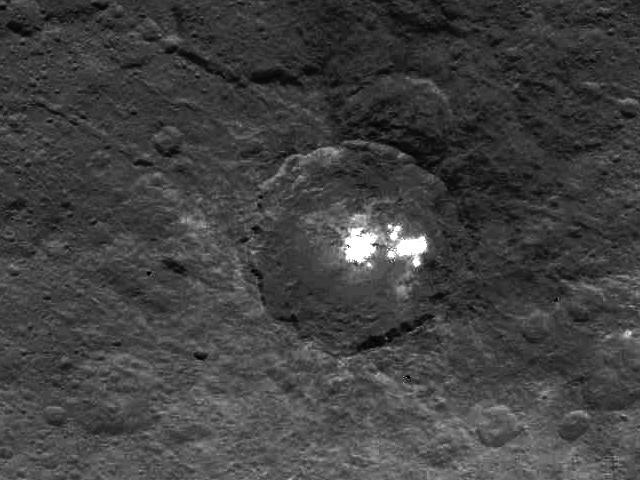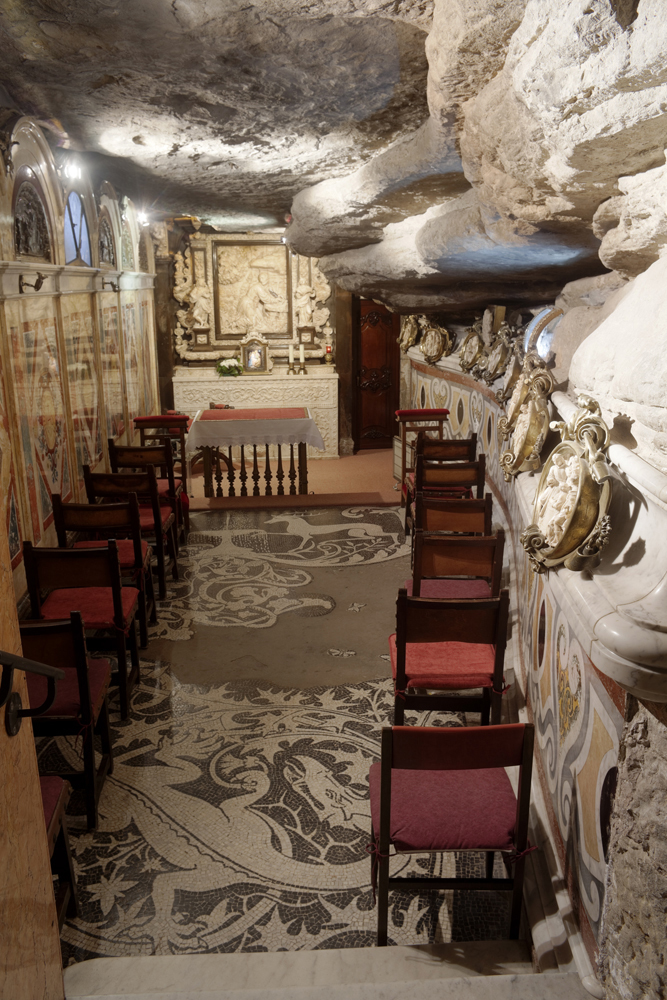Astronomers explained the strange white spots on Ceres

Since the Dawn probe took the first photos of unusual white spots on the surface of the dwarf planet Ceres in March 2015, scientists and astronomy enthusiasts have not stopped discussing - what are these mysterious objects? Volcanoes? Geysers? Glaciers? Cities of aliens? On the NASA website, online voting was opened with different options for explaining a strange phenomenon. The answer "Other" won in it.
In general, everyone could only sit and wait until the Dawn probe gets the opportunity to take new pictures after the last drop in orbit to 385 km. A decrease in the orbit and a special change in the parameters of the camera (since June the exposure was set separately for dark areas and for light) gave photographs of amazing beauty with a record resolution of 35 meters per pixel.
In total, more than 130 bright spots were found on the surface, most of which are located near impact craters.


Two groups measured the brightness of the spots, the surface structure and the readings from the interferometer. Now published scientific papers with reasonable assumptions, what is it all the same.
In terms of brightness and structure, it became clear that this is not ice and not salt, but, so to speak, something in between. In general, it seems that Ceres contains deposits of a certain type of aqueous magnesium sulfate - hexahydrite (Mg [SO 4 ] 6 H 2 O).
Like Epsom salt, Ceres hexahydrite also forms fibrous, layered layers on the surface of stones. On Earth, this also occurs, albeit very rarely. For example, inthe cave of St. Ignatius in Manres (Catalonia / Spain). In 1522, a Catholic saint, the founder of the Jesuit Order, Ignatius de Loyola, after his return from Montserrat, lived in this secluded grotto on the banks of the Cardener River for 11 months, it was in the saint's grotto that enlightenment overtook. Later, a church was built in this place, including a grotto in a part of the interior in the corner of the building.

Judging by the photographs, scientists suggest that hexadritis spots formed under the influence of asteroid impacts as a result of sublimation of ice under the surface of the planet.
“In the simplest scenario, the process of sublimation of ice begins after a mixture of ice and mineral salts is formed, when a meteorite penetrates the insulating dark upper layer,” the authors of the scientific paper writepublished December 9, 2015 in the journal Nature.
Another group of researchers studied data from an infrared spectrometer and announced the presence of phyllosilicate rich in ammonia on the surface of Ceres ( scientific work ). If so, then the planet Ceres has formed outside the solar system. Another option is that it was formed in the solar system on the basis of material that has flown from outside the solar system, the authors of the scientific work say .
In any case, this is a rather unexpected result.
Scientists will continue further research based on the latest high-resolution photographs. Including they are interested in a strange haze that appears at the base of the Occator crater strictly at a certain time of the day.
